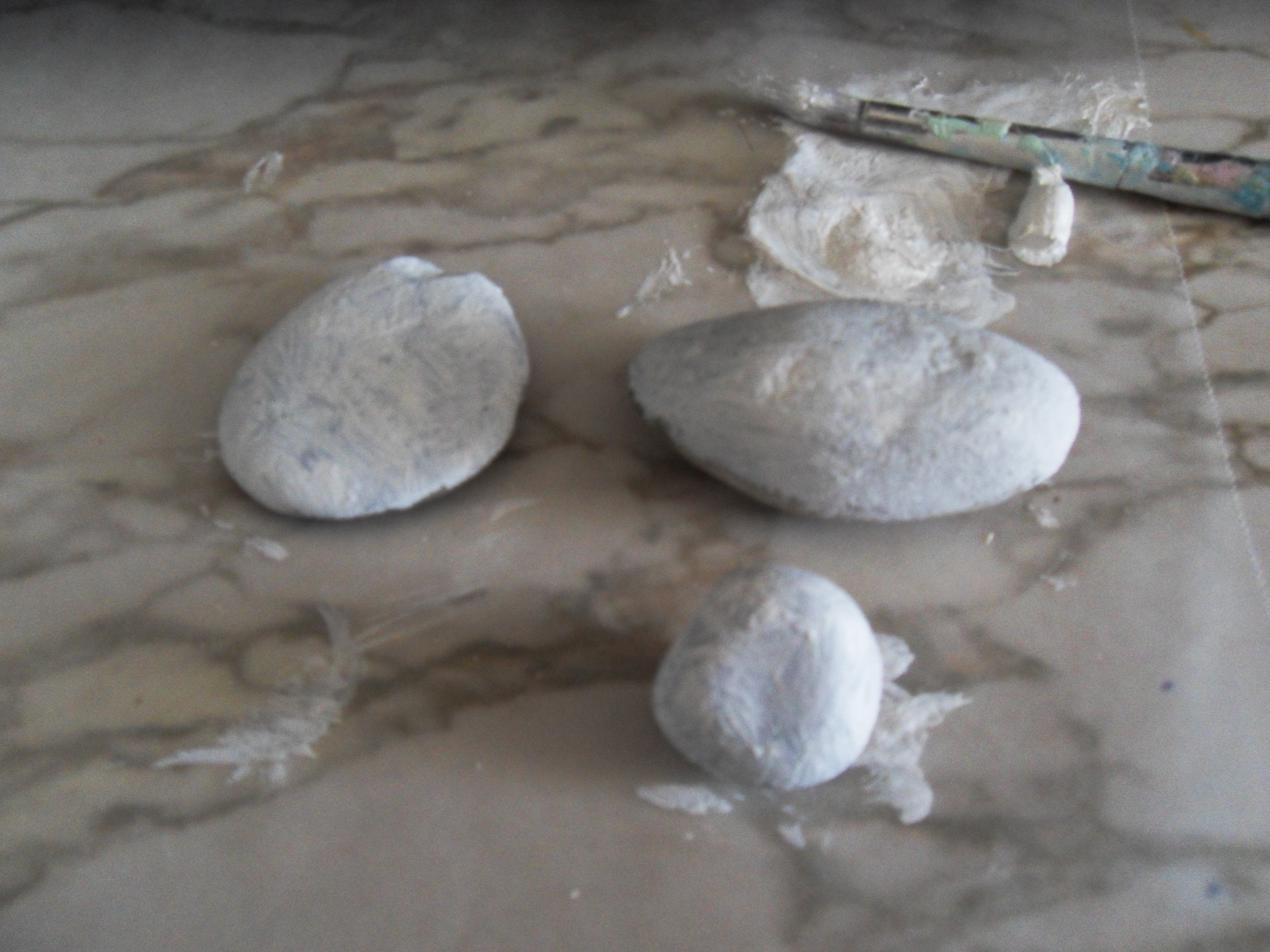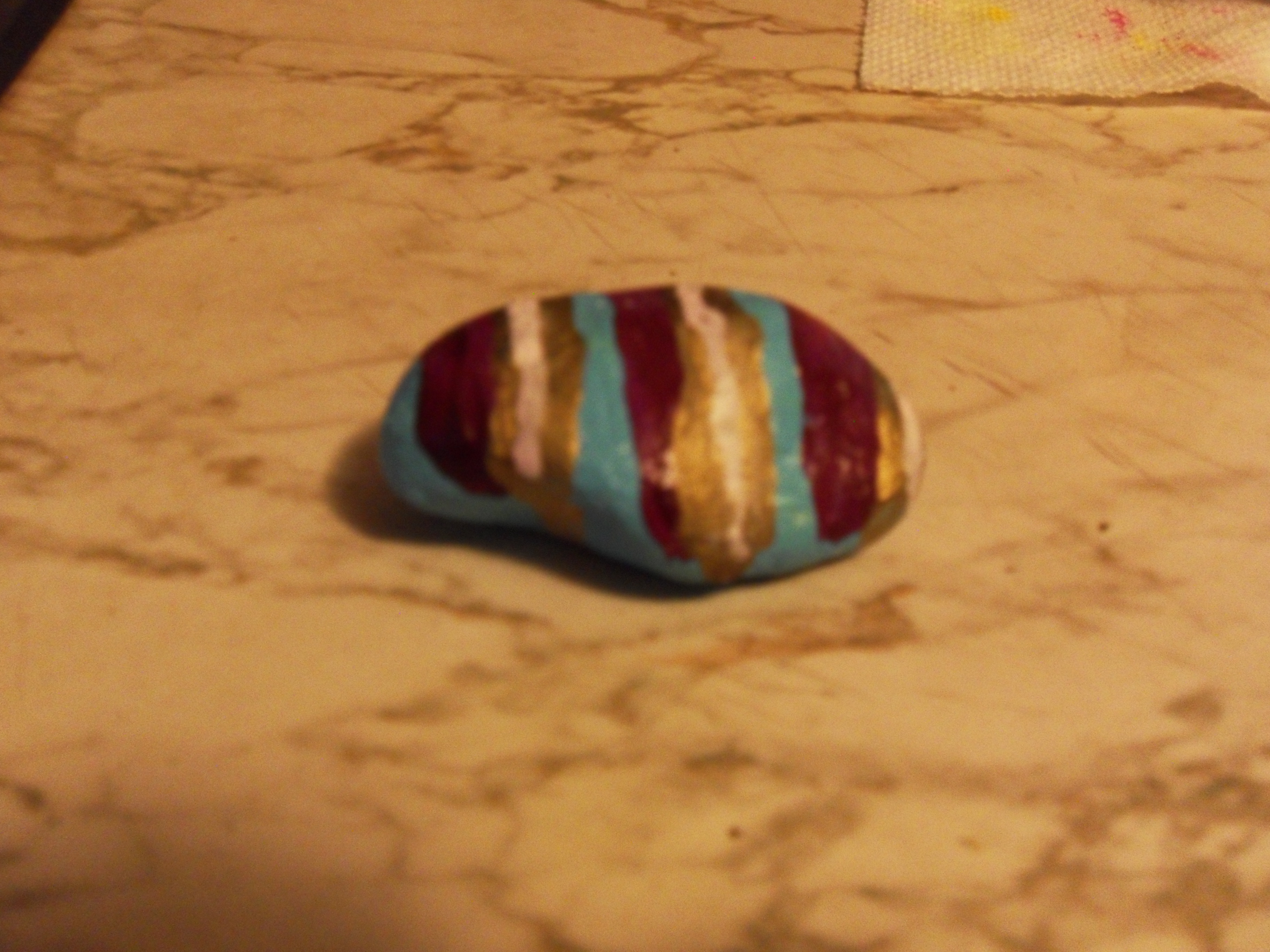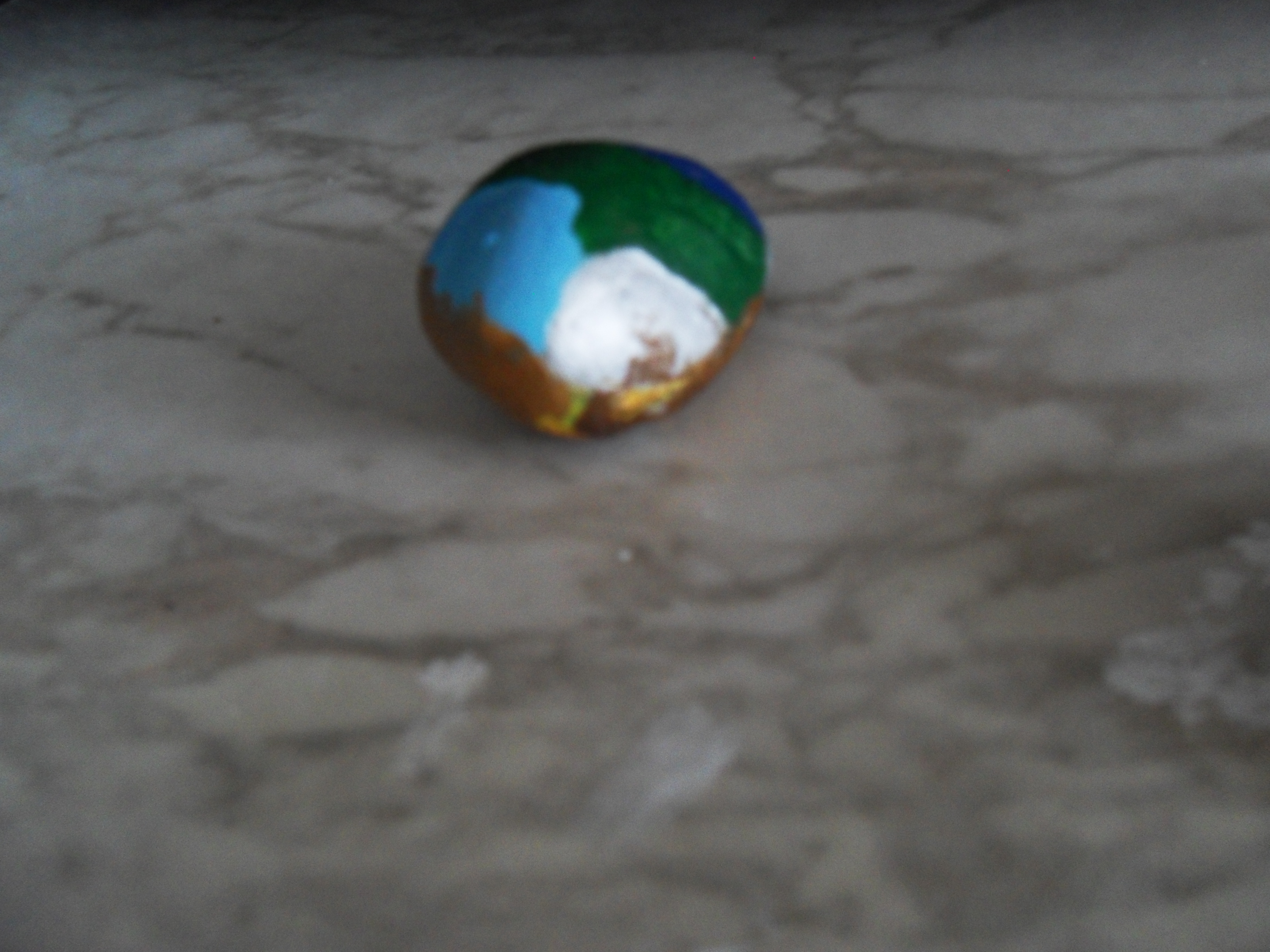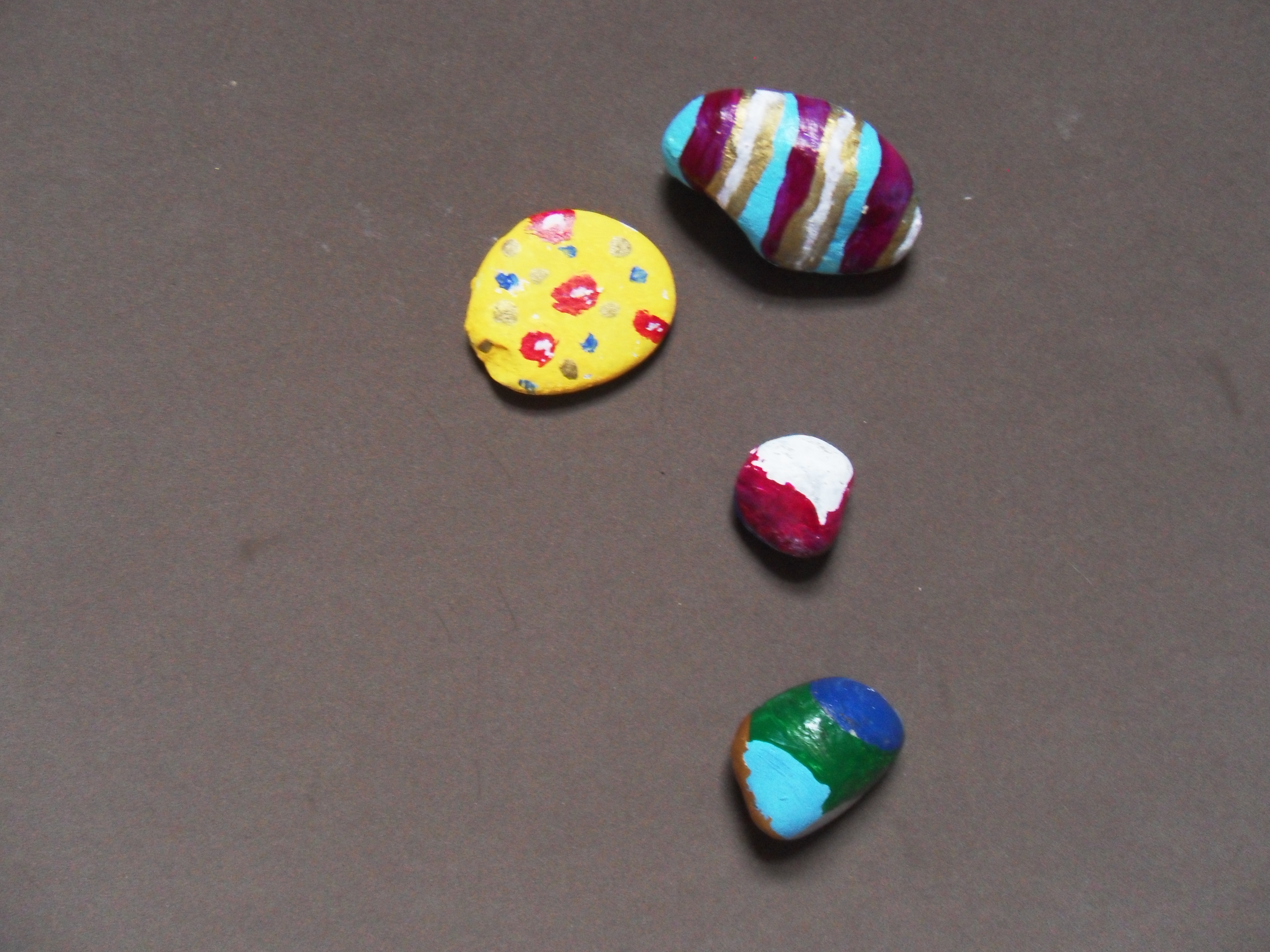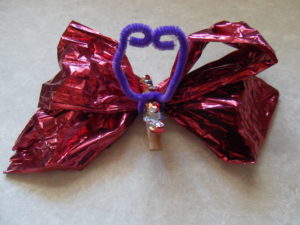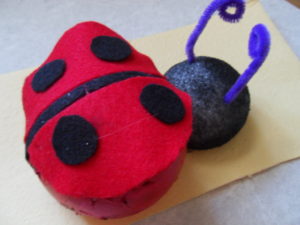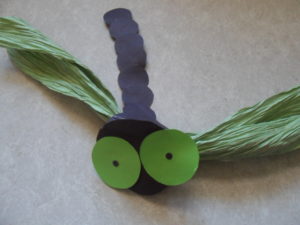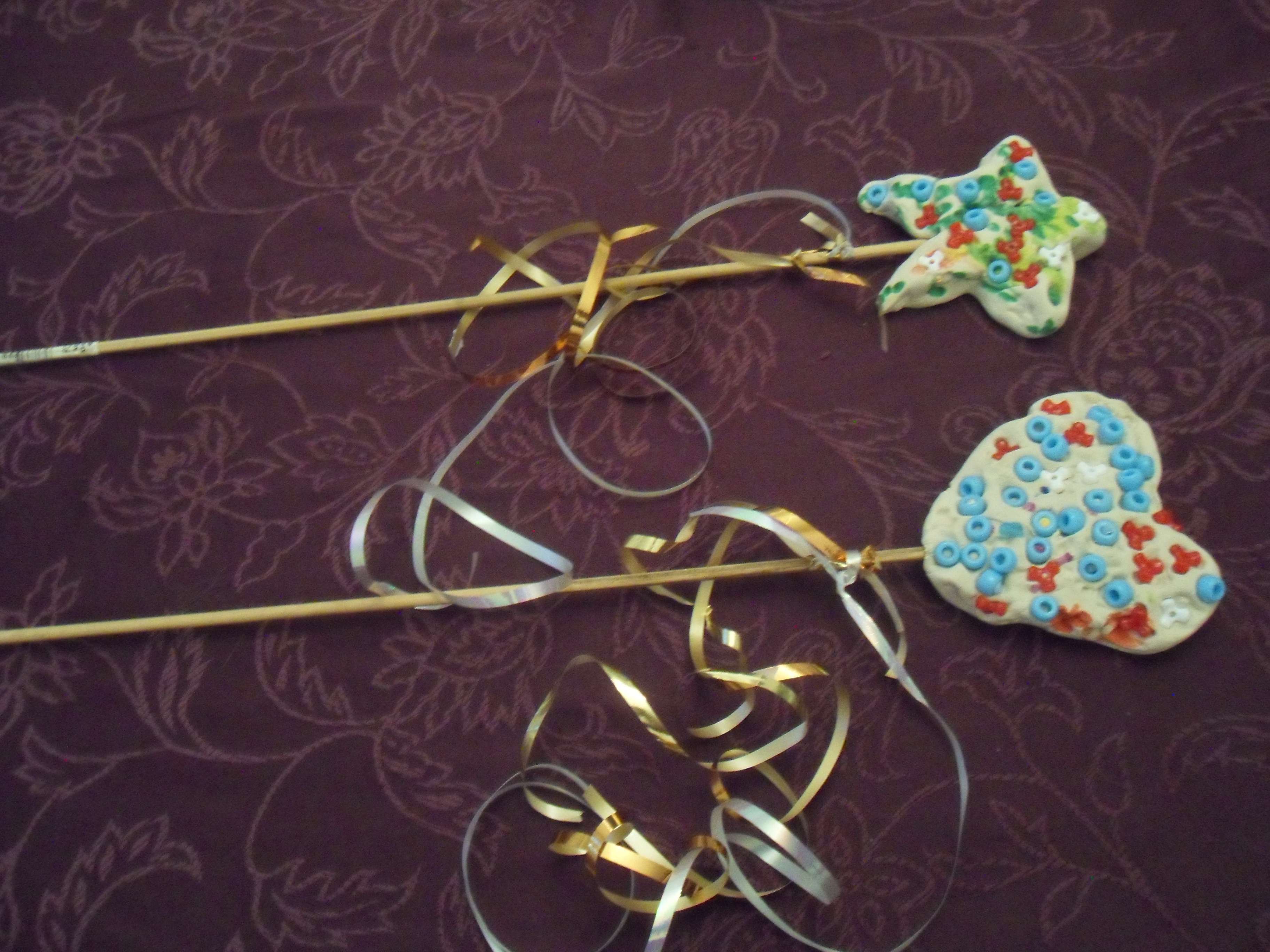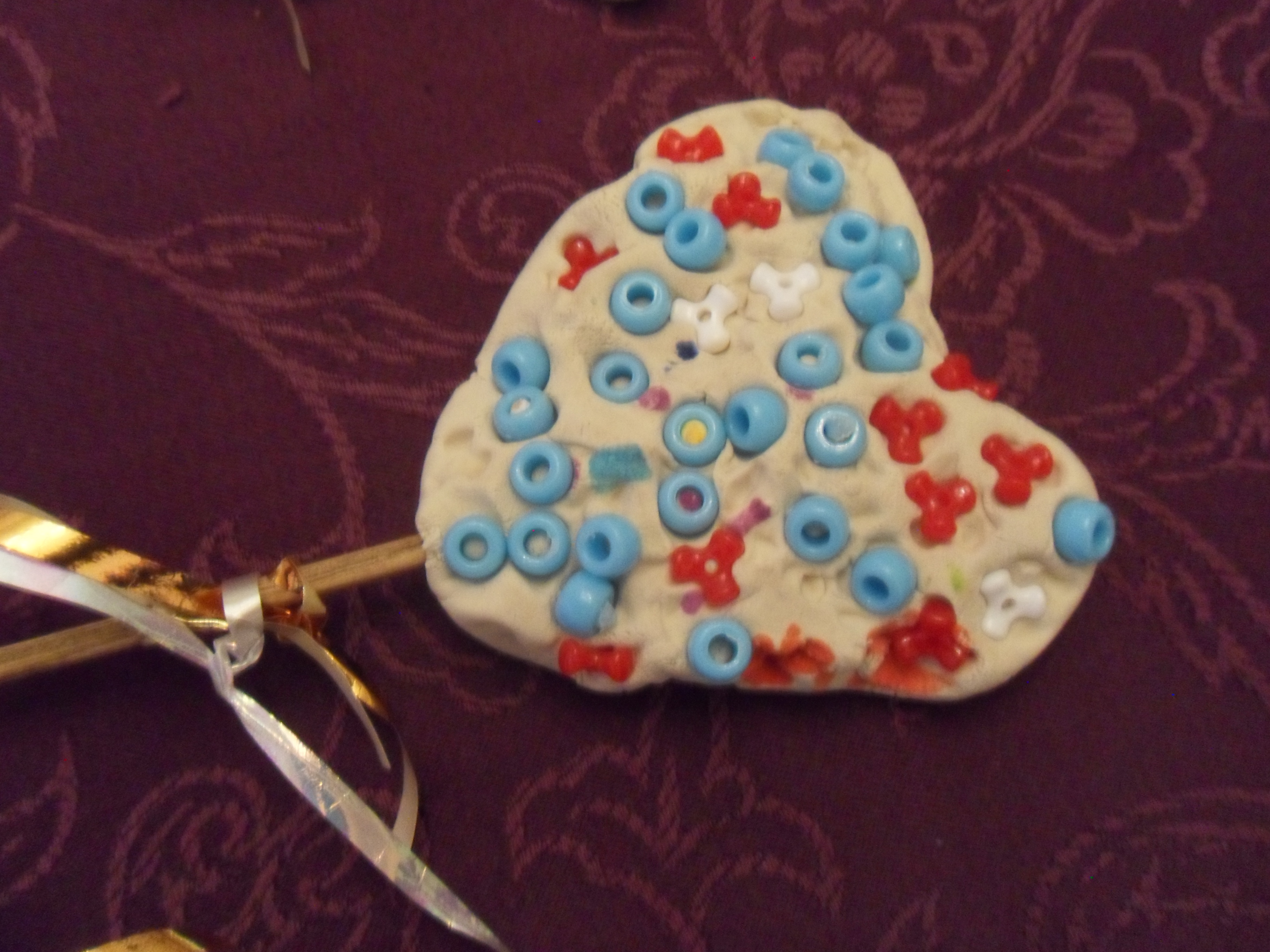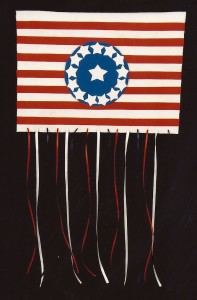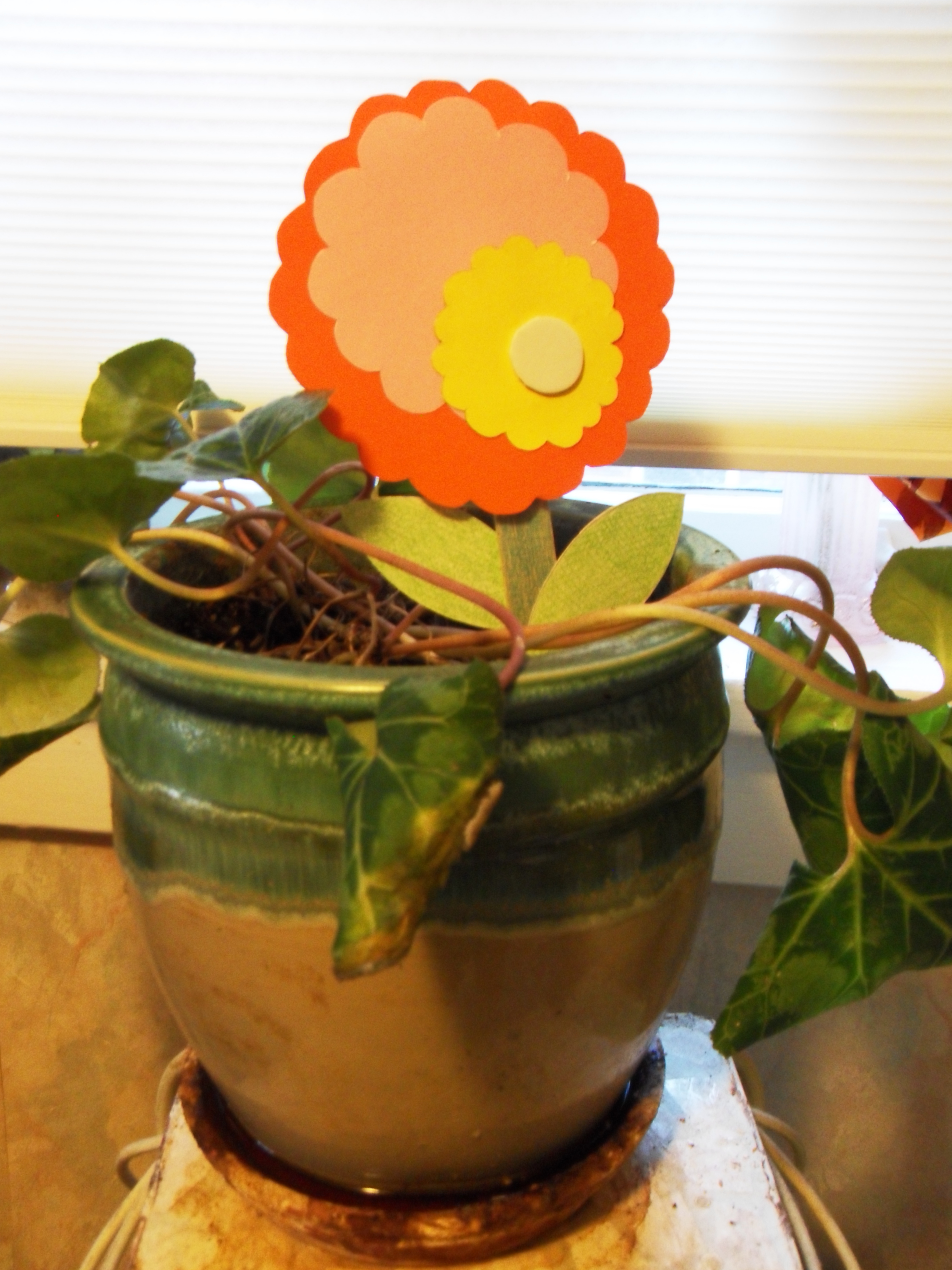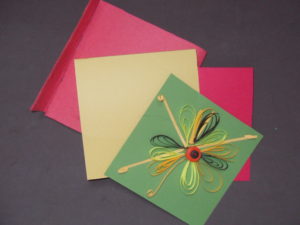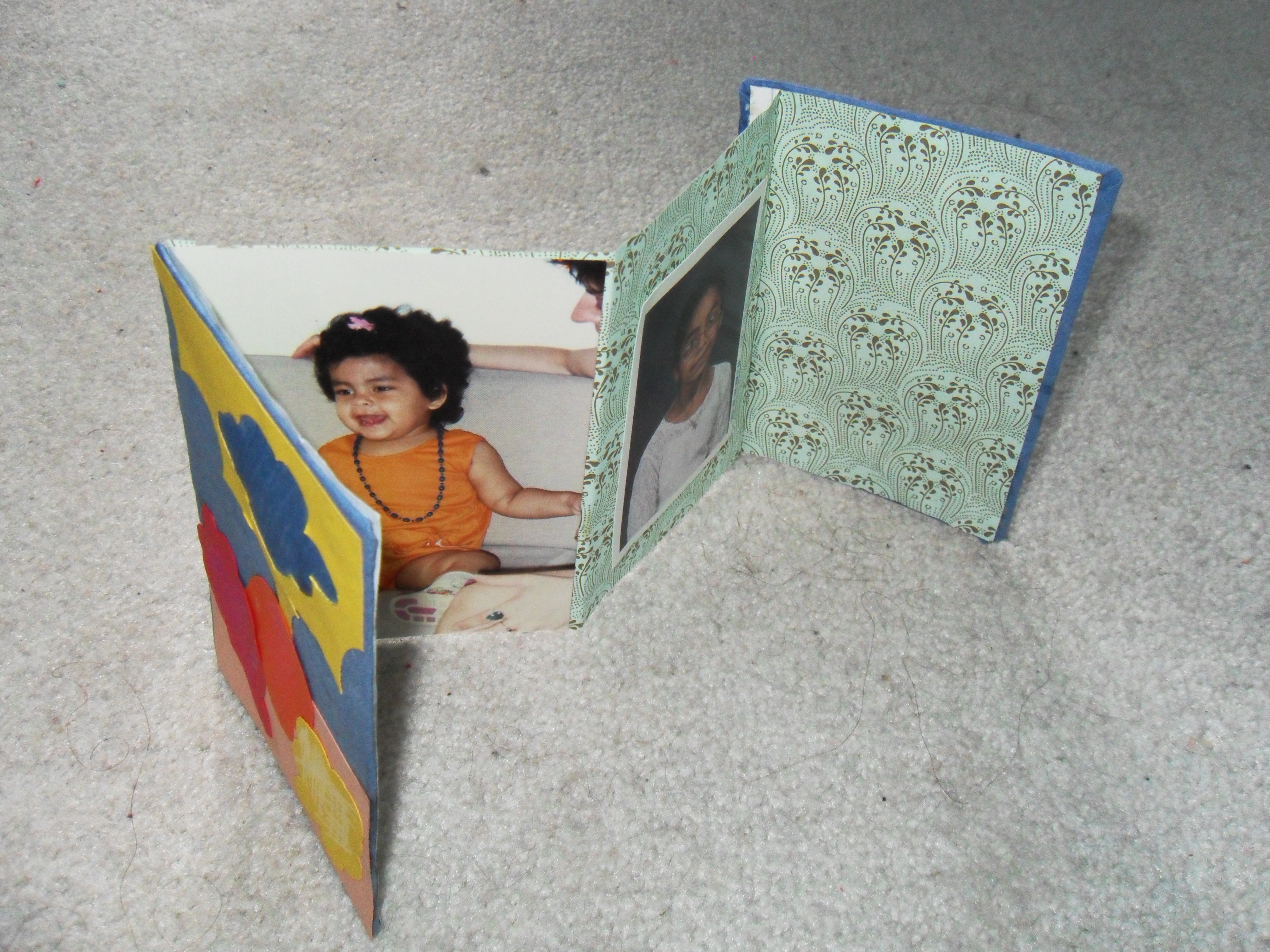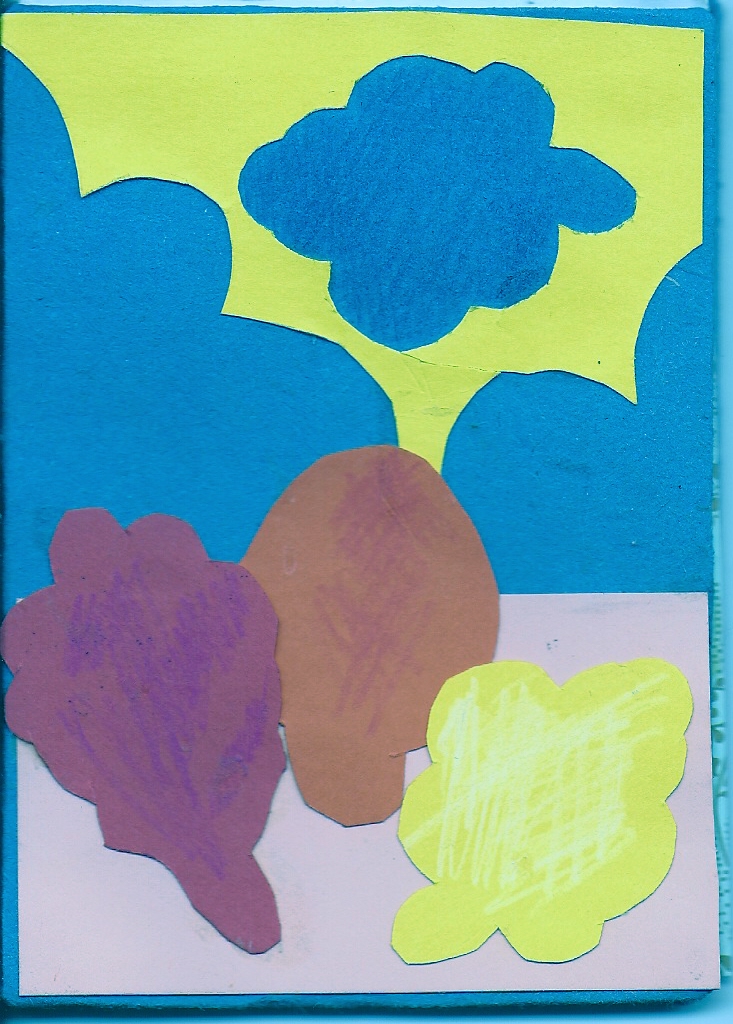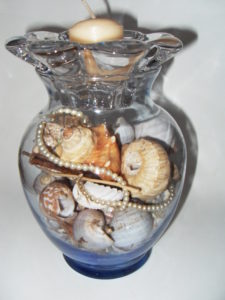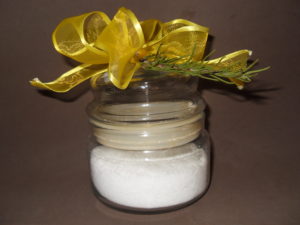PAINTED ROCKS is an updated adaption of the project from “Painted Stones and Stone Sculptures” found in the Reinhold Book of Arts and Crafts Techniques and published by Van Nostrand Reinhold Company, a division of Litton Education Publishing, Inc. in 1976. Materials: Rocks preferably with a relatively smooth surface Poster or acrylic paints Brushes of various widths Container for water Palette or disposable smooth surface like wax paper Soap Paper Towels Newspaper or something similar to cover the surface of your work space
- Wash rocks thoroughly and dry. If rocks are very dirty, soak in a bucket of sudsy water, rinse and dry. In the meantime, cover your work space.
- Think of a design for the rock. Sometimes the rock suggests a design or an object. Stripes, dots, stars, swirls, circles are some ideas you can use alone or in combination.
- Select the paint colors and squeeze a small amount (about the size of a quarter to start) on the palette or wax paper. Squeeze white, black or brown for the base coat of the rocks.
- Prime the rock white if you selected lighter colors or brown if you selected darker colors. This step isn’t required but it makes the colors adhere to the rock better if there is a base coat on which to paint your design. Paint one side at a time and allow the rock to dry. Turn over and paint the other side.
- If you can’t think of a design, lay the paints on the surface randomly. Overlap the colors and see them run into each other.
- Paint one side at a time and allow the design to dry. Turn over and paint the other side.
- Use your rocks to decorate your desk or your bedroom’s window sill. They also make nice gifts!
VARIATION: Select yarn or string in different colors and dip into glue. Wrap around the rock in different directions. Allow the glue to dry. VARIATION: Create rock creatures by gluing paper, pipe cleaners, pompom, buttons and more!

